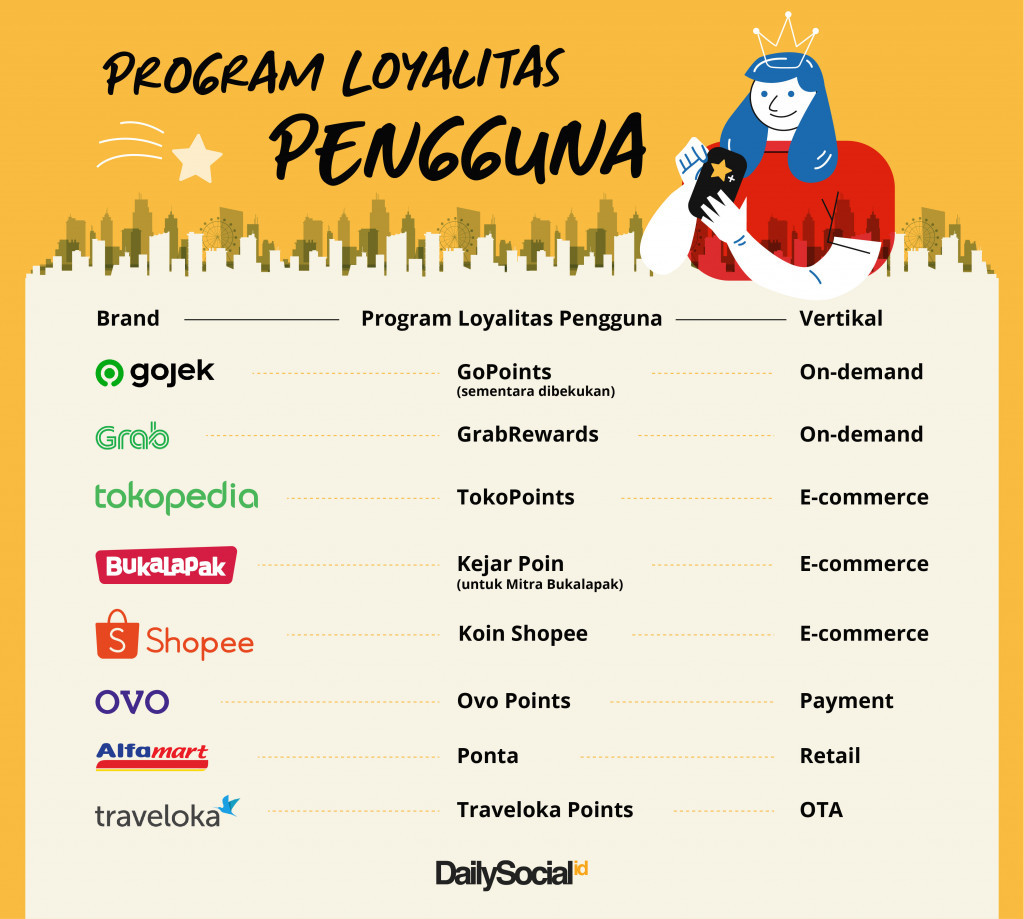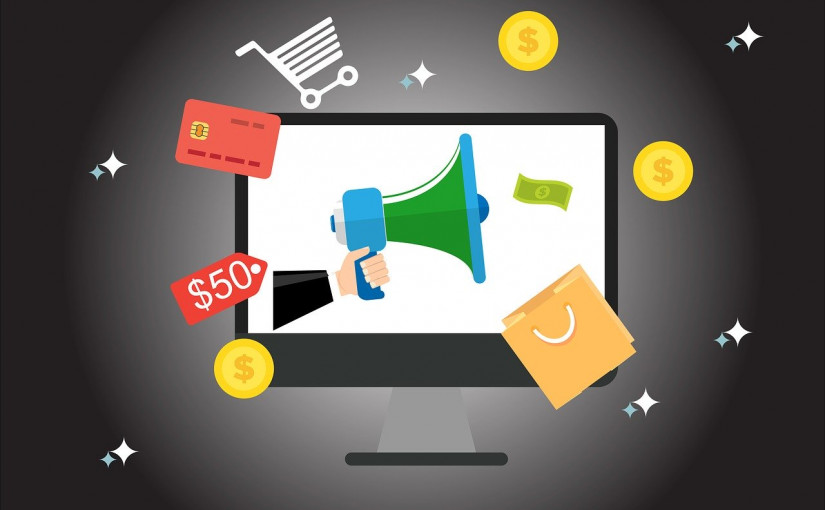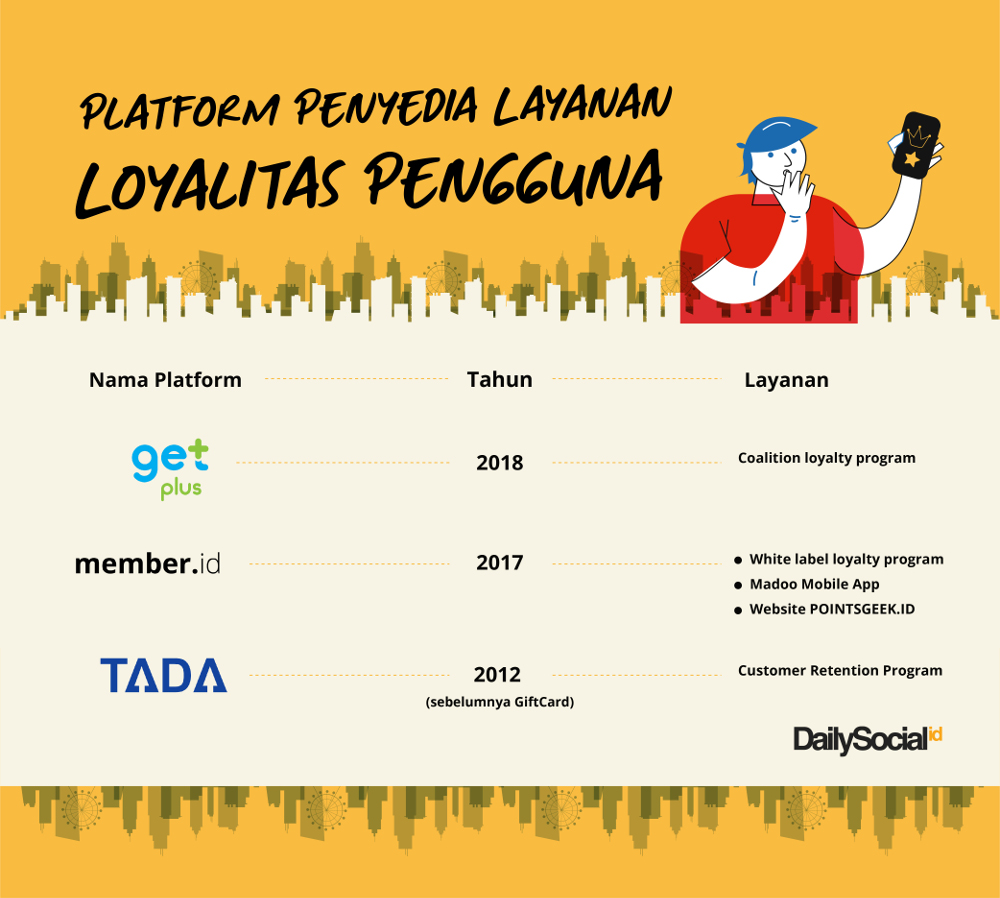When opening the GoPoints feature in Gojek’s app, You’ll no longer find spinner gamification with points that used to be popular. All transactions on Gojek platform will no longer gain points since last January. The remaining points can still be redeemed until 30 June 2020. Gojek is said to develop GoPoints with a different approach.
GoPoints, similar to Ovo Points, TokoPoints, or Shopee Coins. These programs were originally designed to maintain user loyalty, but in the long run, creates comparison variables that influence purchase decisions rather than price.
I tried to talk with several users of digital applications, millennials, and actually care for these points. Some are looking for more benefits such as discounts, some tend to love these points to be used for other things – balance top-up for example.
July Andrian uses and benefits from some loyalty program, such as GoPoint, GrabRewards, Ovo Points, TokoPoint, Shopee Coins, Ponta, and I-Pocket. Everything is collected in order to get other benefits.
“[User loyalty program] This is an advantage for me. Getting some feedback on our loyalty / the amount of money we spend. Therefore, we believe to gain more profit from the purchases we make,” Juli explained.
This opinion is also admitted by others. Including the existence of various points obtained, they become more selective of an item/merchant/service.
“Always, because [I am] very frugal and avoid many losses,” Galuh Intan added.
“[I am] very considering. Whenever I want to buy something, I’ll check which offers the biggest cashback,” Prilita Kamalia said.
Loyal to the points, cashback, and discounts
Indonesians are mostly price-sensitive people. The program should be an answer to loyalty, but vice versa. Most of the users now expecting “bonus” from every transaction they’ve made. Eventually, the brand constantly offers something to gain users.
This is not a very good deal for the sustainability of service/brand/trader. For those which offer no extra benefits for certain users. The benefits become an addictive habit that cannot be avoided to gain users. Being mistaken to implement a loyalty program.
GetPlus, a loyalty service provider program, agreed on this phenomenon. Everyone likes discounts/cashback/rewards/points. However, they still believe people who devoted or loyal to certain brands and traders are exist.
“Consumers [who like certain brands] value recognition, to get loyalty rewards from their purchases and enjoy the shopping experience through the offline store. This is the value proposition of the loyalty program, which is a well-designed program that will be as attractive as a discount offer,” GetPlus’ Co-Founder & COO, Adrian Hoon told DailySocial.
Andrian also explained that Indonesia currently has many loyalty programs by brands or merchants, however, some are not well designed in terms of technology, process, resources, marketing, and other investments. The management is not good enough, followed by poor user experience with a negative impact on the business.
Meanwhile, Co-founder & CEO Member.id Marianne Rumantir said, getting loyal customers is not only from the user loyalty program but through the company’s products and services.
She explained, there are such things as transactional loyalty and emotional loyalty. Transactional loyalty usually exists when a brand provides discounts or offer cheap prices, whereas emotional loyalty is a condition where customers remain loyal to a certain brand even though the price is increasing. It is because customers have trusted the brand, in terms of products and services.
“In terms of discount and cashback programs, this should be considered as an acquisition program, not for a retention program. Regular discounts and cashback usually [and should be] offered to get as many members/users as possible at first attempt, but there is a next customer journey where the loyalty program should be able to provide other benefits to reward its customers beyond discount/cashback. Here [we] offer the loyalty program as a retention program,” Marianne explained.

How should the loyalty program works
The user loyalty program is a long-term investment program that is related to good relationships between services or brands with users. In the system, besides being able to grow users, this program can be used to capture feedback, view demographics, and track user habits. This program should play an important role in the journey of business growth.
Marianne stated several challenges related to the loyalty programs in Indonesia. Two of them are less comprehensive program socialization and some user loyalty programs without a clear customer journey.
“The best loyalty program is the one with well-designed customer journey. If I were to describe, there are 4 phases, Aspiration, Earnings, Benefits, Rewards. Each phase has elements that must be designed and executed well depending on the brand of each industry,” Marianne said.
The point is, Marianne said, in order for user loyalty program to work well, it must be followed by the on-demand products, competitive price to the market, and well-developed service.
“Loyalty programs should run to complement products and improve existing services, therefore, they can provide consumer appreciation as well as helping brands to understand consumers thoroughly,” Marriane added.
Redefining loyalty program
The most noticeable impact of the user’s selective habits on prices and points occurs in the SME business. At first, they intend to provide appreciation and experience for loyal customers but changed the habits of users instead. They become addicted.
Redefining user loyalty programs must be done to prevent misinterpretation. Marriane and Andrian said the key is in the well-designed loyalty program. Not only providing points and cashback, but also a clear system.
A well-designed loyalty program, as for Marriane, is user loyalty programs designed in stages and have their respective phases. Marriane calls it a customer journey or simply a user loyalty initiative built with full consideration of the whole experience.
Each stage is adjusted with its own role in the user relation. It manages time for points, cashback, and other forms of appreciation. The gamification model can also be an alternative, for example for customers who already have certain points.
Adrian took one good example of user loyalty programs in Indonesia. He explained a well-known restaurant group in Indonesia with a well-designed user loyalty program.
“The program they run is designed in such ways as to recognize consumers after making a reservation, reward points earned after making transactions without having to show membership ID, rewards offered based on transaction history, and other restaurant preferences. In addition, there are also occasional rewards. Well, such programs have an influence on brand preference, retention, meanwhile to increase spending driven by extraordinary experience to achieve challenges, bonus rewards, and others,” Adrian said.
–
Original article is in Indonesian, translated by Kristin Siagian

